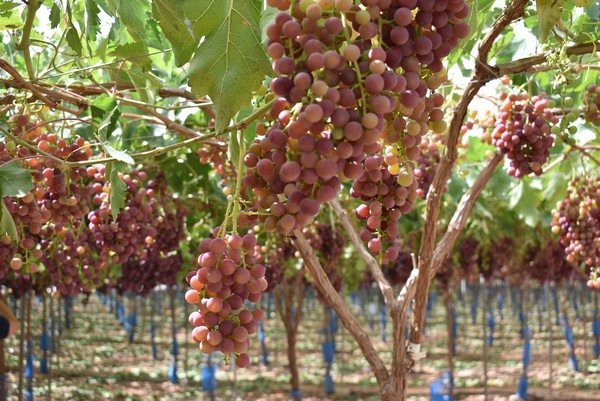In Murcia, the main table grape producing area in Spain, the table grape harvest started at the end of June with the extra-early varieties, which started arriving from the areas closest to the coast. For the time being, and unlike last season, higher volumes are expected, with a production estimated at around 240,000 tons, and with better quality fruit.
As the days go by, the supply of Spanish table grapes continues to increase. There are currently white and red seedless varieties available.

"Fortunately, the torrential rains recorded in May in Murcia did not take a toll on the grapes, given the phenological state they were in, so for now, we have a full production that we estimate at about 240,000 tons. Of these, we expect to export around 200,000 tons if the weather remains favorable," says Joaquín Gómez, president of the Association of Producers - Exporters of Fruit, Table Grapes and Other Agricultural Products (APOEXPA).
The representative of this association, which accounts for most of the Spanish table grape production and exports, also highlighted the good quality of the fruit this year. "Last year's production was worse in terms of volume and quality due to the impact of the rains during the fruit setting stage, but this year's conditions have been more favorable.
At the moment, Spanish table grapes are competing with the last batches of the Egyptian campaign, as well as with Italy's seedless grapes, of which there has been a greater production this year. "The southern hemisphere's fruit has practically run out and now our production is overlapping with Egypt's, against which it is difficult to compete in terms of price, especially in markets such as the United Kingdom and Central Europe. Still, in Spain we enjoy a better geographical position and we are much more efficient and faster at a logistical level, and this is already persuading chains to switch to Spanish fruit. We expect Egyptian stocks to run out in about 2 to 3 weeks," said Joaquín Gómez.
"At the same time, while it is true that Italy has a strong domestic market, its production of seedless grapes continues to grow and it is turning into a serious competitor in some markets. Greece is putting more pressure in the Eastern markets and in the United Kingdom. Fortunately, however, the Spanish table grape sector has increasingly better varieties thanks to continuous investments intended to seek the products that consumers demand," he said.
In recent years, Spain has recorded a significant growth of table grape consumption, especially of seedless varieties, despite it being a market that traditionally consumed seeded grapes. According to the president of APOEXPA, "thanks to the sector's efforts to deliver table grapes to the shelves of Spanish supermarkets all year round, the consumption of this fruit has grown exponentially. The Spanish market is becoming more and more interesting for us, although we still have a long way to go to reach the levels of Italy."
As far as exports to distant destinations are concerned, Joaquín Gómez says that more and better business is expected this year. "We have better prospects for this year, since we are dealing with a more agile and affordable maritime transit compared to the previous year. We trust that we will manage to have a good campaign in Asian markets, Canada, the United States and South Africa. Between the end of July and the beginning of August we will start exporting overseas."
For more information: www.apoexpa.es
